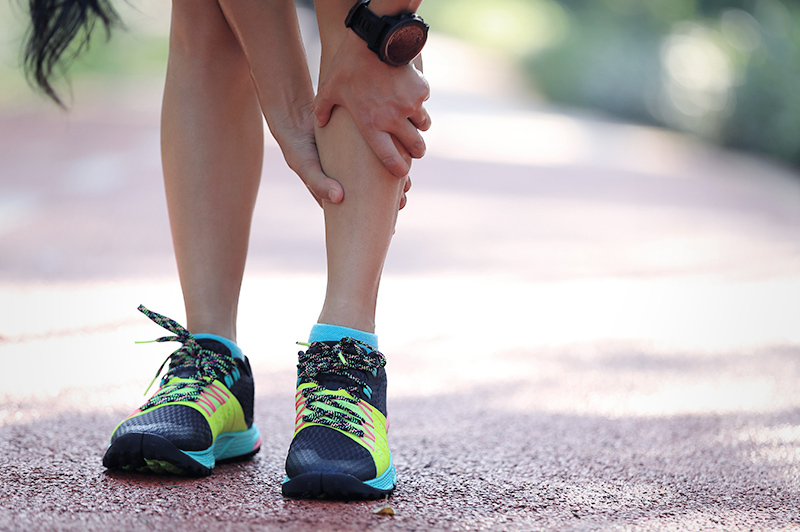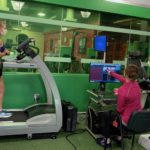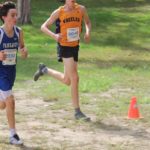The key to preventing shin splints may be underfoot

Medial tibial stress syndrome, also known as shin splints, is a common and often recurring injury among adolescent runners. Recovery can involve weeks of downtime and sports modifications. Even then, many athletes experience chronic pain.
Despite the prevalence and impact of the condition, sports medicine experts have yet to reach consensus about the cause. Theories include lack of leg muscle strength, lack of flexibility, overuse, and running surface factors. In studies of adult runners, those with smaller, less developed ankle and calf muscles were found to be more prone to lower limb pain. This led some rehabilitation programs to focus solely on these areas in adolescents, though there was little evidence that the approach was appropriate or effective for this age group.
Sports medicine researchers at Boston Children’s Hospital may have found a new pathway for preventing and treating medial tibial stress syndrome in young athletes. They did so by focusing on an overlooked muscle group in adolescent runners: the muscles of the feet. The results, published in PM&R, the scientific journal of the American Academy of Physical Medicine and Rehabilitation, could affect runners, soccer players, basketball players, and any other athlete whose sport includes running.
Exploring the foot-leg connection
“Feet are essential in each stage of the running stride,” explains senior author Kristin Whitney, MD, MA, director of the Injured Runners Clinic. At the clinic, assessing an athlete’s individual running gait motion is integral to managing running-related injuries.
A runner’s feet absorb the force of landing, stabilize the ankle and leg at midstance, and propel the runner forward. Would stronger feet correlate to lower rates of medial tibial stress syndrome?
Using ultrasound imaging to measure tendon quality and intrinsic foot muscle size, Whitney and her running research team set out to understand the unique features of medial tibial stress syndrome in adolescents. They compared the muscle and tendon anatomy of the leg and foot in 14 adolescent runners with lower-extremity running injuries to those of 14 healthy adolescent runners.
Compared to the uninjured group, the injured adolescent runners had reduced relative foot intrinsic muscle size, particularly in the foot muscles that make up the “foot core.” The foot core includes the arch of the foot and the span along the foot’s arch (the abductor hallicus and the flexor digitorum brevis).
Foot yoga for total leg strength
“Feet with weak core muscles are less effective in absorbing force and stabilizing the legs,” says Whitney. Without a stable platform provided by the feet, each running step can torque the inside of the shin, creating the chronic tissue strain and pain common in shin splints. Moreover, the foot core helps the foot act as a rigid lever when pushing off, so a stronger foot core increases running efficiency and performance.

Fortunately, like any other muscle group, core foot muscles can get stronger with focused training. Whitney and her colleagues in the Sports Medicine Division have started prescribing “foot yoga” to athletes with shin splints. The exercises are designed to build strength in the arch as well as the top and bottom of the foot. When practiced regularly for four weeks, the exercises, which take under 10 to 15 minutes per day, can make positive change in the motion of the foot and shins.
“We’ve seen a meaningful difference in foot strength and rates of recovery in the athletes who follow the protocol,” says Whitney. This unique focus on injury patterns among adolescent runners and tailored interventions are core to the mission of the Injured Runners Clinic and inspires much of the clinical research conducted by the group.
In the future, Whitney believes foot muscle training could join dynamic stretching and cross-training on the healthy runner’s training plan. “Strengthening the foot muscles may give athletes with shin splints a way to treat this chronic issue so they can get back on the road, trails, or fields with less pain.”
Learn more about the Injured Runners Clinic or refer a patient.
Related Posts :
-

Gait analysis gives runners a window into their form
Why can some runners compete in marathon after marathon while others get injured? The answer often lies in the runner’...
-

What running mistakes lead to injury?
Running outside is a great opportunity to get some fresh air and, because it requires so little equipment, may be ...
-

Avulsion fracture taps the brakes on a runner’s races
By the time Will Benoit and his parents met Dr. Kristin Whitney, they all had a bad feeling about his ...
-

Jenna’s comeback from PAO surgery
By the time Jenna was 14, her off-and-on hip pain had become an always-on issue. The accomplished soccer player and runner ...





